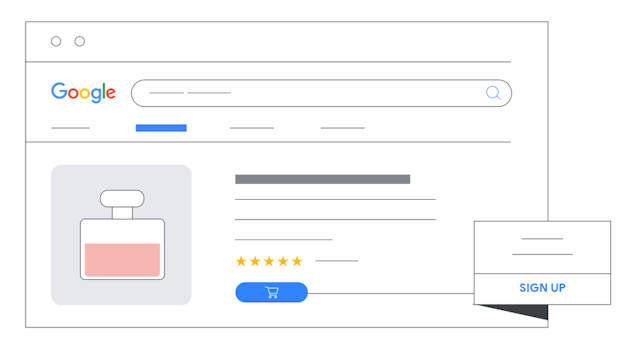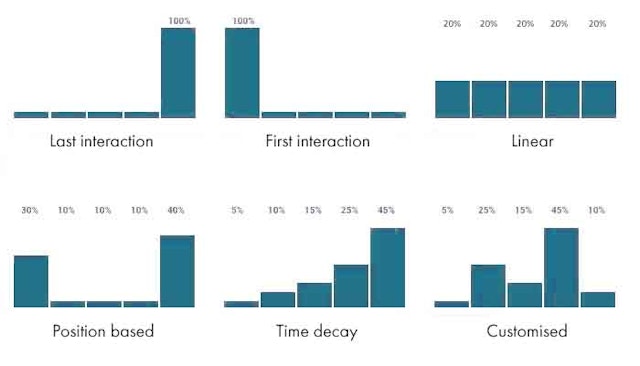Five ways you could be wasting your Google Ads spend
Google Ads is the fastest way to bring quality traffic to your website, but maximizing the return on your ad spend isn’t easy. There are endless approaches, campaign settings and external factors that can cause you to waste valuable budget and, today, we’re addressing five of the biggest causes.

Vertical Leap teaches marketers how to regain control by automating processes through Google Ads
All advertisers waste Google Ads spend in these five ways, at one point or another, and some never get a grip on these issues – so let’s try to change that.
1) Poor on-site experiences
There’s not much point in spending money to bring traffic to your website if the post-click experience fails to convert visits into valuable action. In PPC advertising you pay for every click, so you need to make sure enough of those visitors go on to complete a purchase in order to generate a profit.
Landing page experience is one of the top three considerations in your Google Ads Quality Scores, which strongly affects how much you have to pay to show for keywords.
Previously, Google has recommended loading times of 1-3 seconds to minimize bounce rates, but its new page experience signal and Core Web Vitals push for loading times of 2.5 seconds or less.
Ensure landing pages are relevant to the ad users click on, deliver a positive experience and guide visitors toward conversion goals so you can achieve a return on ad spend (ROAS).
2) Failed conversion tracking and attribution
Unless you’re accurately tracking conversions and attributing conversions to campaigns/ads, you’re optimizing in the dark.
Conversion tracking in Google Ads shows you how to define conversion actions and see which keywords, ads, ad groups and campaigns are driving users to complete these actions. For example, you can specify product purchases, email sign-ups, phone calls and a range of other actions as conversions and optimize campaigns to maximize valuable actions.

One problem conversion tracking doesn’t solve is crediting keywords, ads, ad groups and campaigns that contribute indirectly to the conversion. Most purchase journeys take place over multiple touchpoints, meaning one customer may interact with several ads before completing the purchase.
The danger is you might pull an ad that plays an important role in this journey because it’s not directly converting, and this is where attribution is so important.
In Google Ads, there are six different attribution models: Last click, First click, Linear, Time decay, Position-based and Data-driven.

If you have enough account data, we recommend using the Data-driven attribution model, which distributes credit for the conversion based on your past data for the specified conversion action. Otherwise, use Time decay to pass credit to every interaction while giving more value to the last and most recent interactions.
By default, Google Ads uses the Last click attribution model, so you’ll need to change this setting.
3) Over-optimizing CPCs and other money-savers
With a platform such as Google Ads, it’s easy to fall into the trap of over-optimizing CPCs and other expense metrics. While there’s nothing wrong with trimming off some fat from your costs-per-click (CPCs) and costs-per-action (CPAs), you can end up limiting the profitability of your campaigns.
With PPC advertising, your focus should be on maximizing profit and the return on ad spend (ROAS) for your budget – not spending as little as possible and wasting ad spend on underperforming campaigns.
4) Weak campaign and targeting settings
With keyword targeting, Google Ads allows you to pinpoint audiences with great accuracy, but there are plenty of other settings you can use to spend your budget more effectively.
First of all, you’ve got a range of audience targeting settings for greater control over who sees your ads. You can also apply negative keywords to prevent your ads from showing for unwanted queries/keyword variants. Ad scheduling is another important campaign setting that allows you to control when your ads are shown or increase bids to prioritize times of the day, week or month.
Bid adjustments allow you to control how often your ads show based on where, when and how people search – and you can pull in third-party data to optimize your PPC spend, based on external factors. For example, for one client we’ve used data from the Met Office to optimize bids for products that sell in higher volumes during periods of rainfall.
5) Trying to do everything manually
Once you get into advanced campaign optimization, such as using third-party data from the Met Office to optimize bids in relation to weather predictions, your Google Ads workload is really stacking up.
You can’t apply this level of granular control across an account manually, which means you can’t maximize the use of your budget by yourself.
Thankfully, automation technology has advanced enough over the past decade to manage the repetitive nature of campaign management. Google Ads has plenty of automation features built into the platform, including automated bidding and responsive search ads, but you sacrifice control by using these.
You can retain this control by building your own automated processes and we’ve done this ourselves with custom bidding automation and a budget forecasting algorithm that uses machine learning to analyze PPC spend and see where we can increase/lower bids to maximize profit.
Callum Coard, PPC specialist at Vertical Leap.
Content by The Drum Network member:

Vertical Leap
We are an evidence-led search marketing agency that helps brands get found online, drive qualified traffic to their websites and increase conversions/sales.
To...

